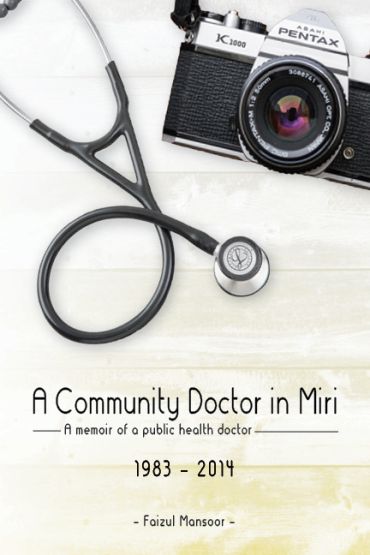
A Community Doctor in Miri
A memoir of a public health doctor
Buy A Community Doctor in Miri
Deprecated: Automatic conversion of false to array is deprecated in /home/ihubmy/public_html/libraries/src/HTML/HTMLHelper.php on line 795
FREE SHIPPING PROMO
- Enter coupon code MIRIDOC during the checkout to waive your shipping fee.
- Only applicable for Malaysian delivery address
FREE SHIPPING PROMO
- Enter coupon code MIRIDOC during the checkout to waive your shipping fee.
- Only applicable for Malaysian delivery address
Shipping fee and turnaround time

FREE SHIPPING
Get FREE SHIPPING with a minimum purchase of RM100. (For Peninsular Malaysia only)

ENJOY FLAT RATE SHIPPING FEE
Enjoy FLAT RATE shipping fee regardless of item weight. RM10 within WEST MALAYSIA (for orders above RM100); RM25 to SABAH/SARAWAK (for orders of any price).

DELIVERY TURNAROUND TIME
Estimate delivery time: WEST MALAYSIA (1-3 working days); SABAH/SARAWAK (2-5 working days).
Description
The stage was already set in 1983. A young man coming to Sarawak for the first time as a practicing doctor in Miri, await for the events to unfold before him.
A hospital located in a scenic seaside environment across a river on a Peninsular strip; an isolated Miri town which was only accessible from nearby towns by dirt unsealed roads; the presence of air transfer that could only be afforded by a few.
In the 90s, Miri and its surroundings underwent a rapid urbanisation process. It saw the influx of local migrant workers from all over Sarawak. Squatters increased in numbers. Living conditions and sanitation were compromised. It was only a matter of time when diseases would emerge at alarming levels. Suddenly, cholera and dengue became the main threats to Miri and its outskirt. Malaria was rampant in the jungles. The El Nino of 1996-97 did the damage when practically all the rural areas were affected by cholera.
In the remote jungles where all the clinics are located, the health workers worked and lived in extreme conditions – humid environment, limited electricity times from generators, water supply from the hills, rain and river. Young enthusiastic Medical Assistants and Community Nurses are assigned to these places to learn the trade; they have to relearn the hardship of living which their parents went through. All was done for the sake of providing health to the local communities.
Other public health challenges emerged as Miri went beyond 2000.
All the events, experiences, and challenges that occurred are documented in this book.
Book Content
1: The Wonder Years
2: Facing Reality
3: Sarawak, Here I Come!
4: A Travel Back in Time to Delightful Miri 1983
5: Miri and its Old and New Hospital
6: Living the Life of Service: My Hospital Years
7: My Public Health Experience: The Early Years
8: Miri’s Divisional Health Office: Everything Starts Here
9: Changes of Miri Division: Of People, Villages and Towns
10: The Clinics of Baram: A Historic Journey
11: The Clinics of Miri: A Perspective
12: Saving Lives in Rural & Remote Clinics
13: The Flying Doctor Service
14: Community Participation: The Way Forward
15: The Boatmen of Baram: Unsung Heroes
16: Recollections of Cholera in Unusual Places at Different Times
17: Four Years Away from Miri: 2005 - 2009
18: Malaria: A Never-Ending Public Health Challenge
19: Public Health Enforcement in Miri
20: A Life’s Journey
-
5 star1
-
4 star0
-
3 star0
-
2 star0
-
1 star0
Our Location
Inspiration Hub
21-B, Persiaran Pegaga
Taman Bayu Perdana
41200 Klang, Selangor
Contact Us
Email:
Whatsapp:
010-200 9935
Opens Monday to Friday (11am - 6pm)
Closes on Saturday & Sunday